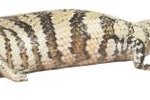
It is not absolutely necessary to know the gender of your pet iguana, but it certainly can be useful when you are planning for how to care for your pet. Knowing your iguana's gender can enable you to provide better, gender-specific care for your pet as well as prevent unwanted breeding from occurring if you have multiple iguanas.
Veterinarian
Your veterinarian can probe your iguana's cloacal vent to determine whether your pet is a boy or a girl. Your veterinarian will be the best person to accurately determine the gender of your iguana, especially if you own a young iguana. Juvenile iguanas are significantly more difficult to correctly sex. If your iguana is less than a year old, a veterinarian will be the only person who can accurately find out your pet's gender.
Male Appearance
Mature adult male iguanas tend to be noticeably larger than mature females. Males may have bumps on the top of their heads as well as longer spikes going down the length of their back. Males are also more likely to have a large dewlap underneath their chin and large muscles next to their jaws. The muscles give the male iguanas the appearance of having swollen jowls. Male iguanas also have noticeable femoral pores on the insides of their legs.
Female Appearance
Female iguanas tend to have longer, slimmer bodies than their male counterparts. They also have smaller heads and do not have bumps on top of their heads. Female iguanas are the only ones who lay eggs. If you notice your iguana has laid eggs, then you can know with absolutely certainty that you own a female iguana. Female iguanas will develop eggs regardless of whether or not they have physically mated with a male. During breeding season, your female may appear thin in the legs and tail with a bulging belly.
Behavior
During breeding season you may notice gender-specific behavior changes in your iguanas. Males are known to become significantly more aggressive, may behave in a territorial manner and even display physically threatening behaviors, including biting and attacking. Some males also turn an orange color during breeding season. Female iguanas may be less likely to eat or stop eating during breeding season. Females also may displaying digging behavior or try to build a nest.
References
Photo Credits
-
Stockbyte/Stockbyte/Getty Images
Writer Bio
Jen Davis has been writing since 2004. She has served as a newspaper reporter and her freelance articles have appeared in magazines such as "Horses Incorporated," "The Paisley Pony" and "Alabama Living." Davis earned her Bachelor of Arts in communication with a concentration in journalism from Berry College in Rome, Ga.



